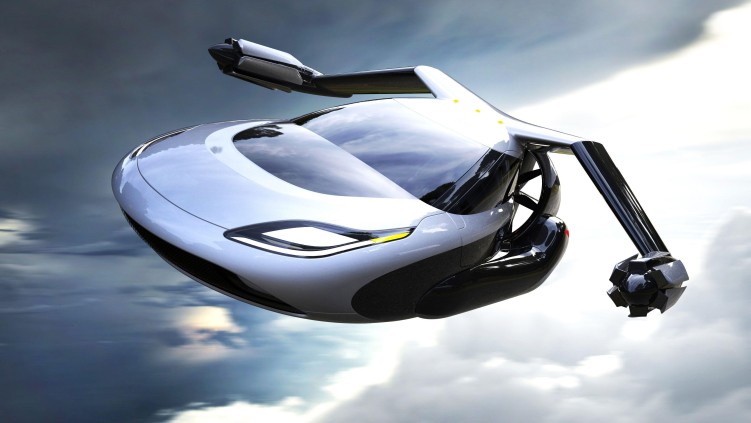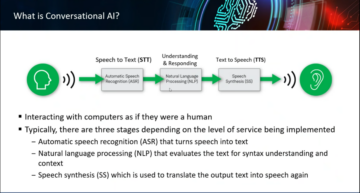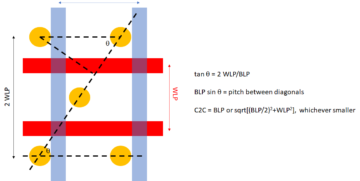
For decades, the concept of flying cars has captivated our imagination, fueling visions of a future where we can soar above the ground, free from the constraints of traffic and congestion. While once considered purely the stuff of science fiction, recent advancements in technology have brought us closer to turning this fantasy into a reality. Electric vertical takeoff and landing (eVTOL) vehicles, commonly known as flying cars, hold the promise of revolutionizing transportation, offering new levels of efficiency, convenience, and accessibility. It’s important to explore the needs driving the development of flying cars, the challenges they face, the benefits they offer, the risks involved, and what the future holds for this transformative technology.
Needs for Flying Cars
· Congestion and Traffic Woes: Growing urbanization and population density have led to increasingly congested roads in cities around the world. Commuting times have become longer, and frustration levels have risen. Flying cars could alleviate these problems by utilizing the airspace, bypassing traffic and reducing travel times. This could lead to more efficient transportation and improved overall mobility.
· Transportation Accessibility: Flying cars have the potential to address accessibility issues by providing transportation options for areas with limited infrastructure. Remote regions, islands, and disaster-stricken areas could benefit greatly from the ability to fly above ground-based obstacles, connecting previously isolated communities. Flying cars could bridge the gap between urban and rural areas, fostering economic development and social integration.
· Rapid Emergency Response: Flying cars could revolutionize emergency services by enabling faster response times and facilitating the transportation of medical supplies, organs for transplantation, and injured individuals to hospitals. In situations where time is critical, such as during natural disasters or in hard-to-reach locations, flying cars could make a significant difference in saving lives and minimizing the impact of emergencies.

Challenges of Flying Cars
· Infrastructure Requirements: The widespread implementation of flying cars requires the development of a comprehensive infrastructure framework. This includes establishing designated landing and takeoff zones, creating charging stations for electric vehicles, designing efficient air traffic management systems, and establishing regulations to ensure safe and efficient operations. Building this infrastructure will be a significant challenge that requires careful planning and coordination.
· Safety and Reliability: Ensuring the safety and reliability of flying cars is of paramount importance. New technologies, such as autonomous flight systems, collision avoidance mechanisms, and fail-safe protocols, must be developed and rigorously tested to minimize the risk of accidents and malfunctions. Safety standards and certifications will need to be established to instill public confidence in this emerging mode of transportation.
· Noise Pollution: Flying cars introduce the challenge of managing noise pollution in urban areas. The sound of numerous flying vehicles could disrupt the tranquility of residential neighborhoods and potentially cause annoyance or discomfort. Efforts must be made to design quieter propulsion systems and establish regulations to minimize noise emissions, ensuring that the benefits of flying cars do not come at the expense of quality of life for those on the ground.
Benefits of Flying Cars
· Efficient Urban Mobility: Flying cars have the potential to significantly reduce commuting times by bypassing congested roads. This could lead to increased productivity, improved work-life balance, and enhanced overall quality of life for urban dwellers. Imagine being able to travel across a crowded city in minutes instead of hours, with the freedom to avoid gridlock and traffic congestion.
· Environmental Sustainability: Electric-powered flying cars have the potential to contribute to environmental sustainability, provided they are powered by renewable energy sources. By shifting transportation from ground-based vehicles to the sky, flying cars could help reduce carbon emissions and mitigate the impacts of climate change. This transition to clean energy-powered transportation could have a positive impact on air quality and the overall health of our planet.
· Economic Opportunities: The development and deployment of flying cars can stimulate economic growth and create new job opportunities. Manufacturing flying cars, building and maintaining the necessary infrastructure, and managing air traffic control systems all require a skilled workforce. Additionally, new industries and services could emerge around flying car technology, further boosting local economies and fostering innovation.
Risks Associated with Flying Cars
· Air Traffic Management: The integration of flying cars into existing airspace systems poses significant challenges in terms of air traffic management. Ensuring the safe coexistence of conventional aircraft, drones, and flying cars requires the development of robust communication and navigation systems. Cooperation between aviation authorities, technology providers, and regulators is crucial to establishing effective protocols and infrastructure to manage the complex airspace environment.
· Cybersecurity: As flying cars become increasingly reliant on software and connectivity, the risk of cybersecurity threats arises. Safeguarding against hacking, system breaches, and data privacy breaches is crucial to ensure passenger safety and protect against potential malicious activities. Strong cybersecurity measures and protocols must be implemented to ensure the integrity and privacy of the systems controlling flying cars.
· Regulatory Framework: The development of comprehensive regulations and policies is essential to govern the use of flying cars. Striking a balance between innovation and safety, while addressing concerns related to privacy, noise pollution, and liability, requires careful consideration. Governments and regulatory bodies need to collaborate with industry stakeholders to establish a robust regulatory framework that ensures the safe and responsible deployment of flying car technology.
Future Outlook
· Technology Advancements: Ongoing advancements in electric propulsion, battery technology, autonomous systems, and materials science will contribute to improving the performance, safety, and affordability of flying cars. Continued research and development will likely lead to more efficient and environmentally friendly flying car models in the future.
· Urban Air Mobility Ecosystems: The successful integration of flying cars will involve the creation of urban air mobility ecosystems. This will require collaboration between vehicle manufacturers, infrastructure developers, air traffic control authorities, policymakers, and communities. Establishing a robust framework that encompasses infrastructure, regulations, and public acceptance is essential for the widespread adoption and safe operation of flying cars.
· Public Acceptance: Public acceptance is critical for the successful integration of flying cars into society. Transparency in terms of safety, privacy, and environmental impact will play a vital role in fostering public confidence in this revolutionary mode of transportation. Educating the public about the benefits and addressing concerns through effective communication and public engagement initiatives will be crucial for the widespread acceptance and adoption of flying cars.
Flying cars hold the potential to transform transportation and reshape our urban environments. By addressing the needs for efficient mobility, accessibility, and emergency response, flying cars offer promising solutions to the challenges faced by our current transportation systems. However, significant hurdles related to infrastructure development, safety, and regulation must be overcome. With careful management of risks and continued technological advancements, flying cars could usher in a new era of transportation that is efficient, sustainable, and accessible to all. The future of flying cars depends on collaboration between industry, government, and society as we work together to turn this futuristic vision into a tangible reality.
Covering: IoT, Blockchain and Quantum Computing
Also Read:
Xcelium Safety Certification Rounds Out Cadence Safety Solution
Sondrel Extends ASIC Turnkey Design to Supply Services From Europe to US
Share this post via:
- SEO Powered Content & PR Distribution. Get Amplified Today.
- PlatoData.Network Vertical Generative Ai. Empower Yourself. Access Here.
- PlatoAiStream. Web3 Intelligence. Knowledge Amplified. Access Here.
- PlatoESG. Automotive / EVs, Carbon, CleanTech, Energy, Environment, Solar, Waste Management. Access Here.
- BlockOffsets. Modernizing Environmental Offset Ownership. Access Here.
- Source: https://semiwiki.com/automotive/332905-the-era-of-flying-cars-is-coming-soon/
- :has
- :is
- :not
- :where
- a
- ability
- Able
- About
- above
- acceptance
- accessibility
- accessible
- accidents
- across
- activities
- Additionally
- address
- addressing
- Adoption
- advancements
- against
- AIR
- aircraft
- airspace
- All
- alleviate
- Amazon
- and
- and infrastructure
- ARE
- areas
- around
- AS
- asic
- associated
- At
- Authorities
- autonomous
- autonomous systems
- aviation
- avoid
- Balance
- battery
- BE
- become
- being
- benefit
- benefits
- between
- blockchain
- bodies
- boosting
- breaches
- BRIDGE
- brought
- Building
- by
- Cadence
- CAN
- car
- carbon
- carbon emissions
- careful
- cars
- Cause
- Certification
- certifications
- challenge
- challenges
- change
- charging
- charging stations
- Cities
- City
- Climate
- Climate change
- closer
- collaborate
- collaboration
- come
- coming
- Coming Soon
- commonly
- Communication
- Communities
- commuting
- complex
- comprehensive
- concept
- Concerns
- confidence
- congestion
- Connecting
- Connectivity
- consideration
- considered
- constraints
- continued
- contribute
- control
- controlling
- convenience
- conventional
- cooperation
- coordination
- could
- create
- Creating
- creation
- critical
- crowded
- crucial
- Current
- Cybersecurity
- data
- data privacy
- decades
- density
- depends
- deployment
- Design
- designated
- designing
- developed
- developers
- Development
- difference
- disasters
- Disrupt
- do
- driving
- Drones
- during
- Economic
- Economic Development
- Economic growth
- economies
- Ecosystems
- educating
- Effective
- efficiency
- efficient
- efforts
- Electric
- electric vehicles
- emerge
- emergency
- emerging
- Emissions
- enabling
- encompasses
- energy
- engagement
- enhanced
- ensure
- ensures
- ensuring
- Environment
- environmental
- Environmental Sustainability
- environmentally
- environmentally friendly
- environments
- Era
- essential
- establish
- established
- establishing
- Europe
- evtol
- existing
- expense
- explore
- extends
- Face
- faced
- facilitating
- FANTASY
- faster
- Fiction
- flight
- flying
- For
- fostering
- Framework
- Free
- Freedom
- friendly
- from
- frustration
- further
- future
- futuristic
- gap
- Government
- Governments
- greatly
- Ground
- Growing
- Growth
- hacking
- Have
- Health
- help
- hold
- holds
- hospitals
- HOURS
- However
- HTTPS
- Hurdles
- image
- imagination
- imagine
- Impact
- Impacts
- implementation
- implemented
- importance
- important
- improved
- improving
- in
- includes
- increased
- increasingly
- individuals
- industries
- industry
- Infrastructure
- initiatives
- Innovation
- instead
- integration
- integrity
- into
- introduce
- involve
- involved
- iot
- IP
- Islands
- isolated
- issues
- Job
- Job Opportunities
- jpg
- known
- landing
- lead
- Led
- levels
- liability
- Life
- likely
- Limited
- Lives
- local
- locations
- longer
- made
- maintaining
- make
- malfunctions
- manage
- management
- managing
- Manufacturers
- manufacturing
- materials
- max-width
- measures
- mechanisms
- medical
- minimize
- minimizing
- minutes
- Mitigate
- mobility
- Mode
- models
- more
- more efficient
- must
- Natural
- Navigation
- necessary
- Need
- needs
- New
- New technologies
- no
- Noise
- numerous
- obstacles
- of
- offer
- offering
- on
- once
- ongoing
- operation
- Operations
- opportunities
- Options
- or
- our
- out
- overall
- Overcome
- Paramount
- performance
- planet
- planning
- plato
- Plato Data Intelligence
- PlatoData
- Play
- policies
- policymakers
- Pollution
- population
- poses
- positive
- Post
- potential
- potentially
- powered
- previously
- privacy
- problems
- productivity
- promise
- promising
- propulsion
- protect
- protocols
- provided
- providers
- providing
- public
- public acceptance
- Public confidence
- purely
- quality
- Quantum
- Read
- Reality
- recent
- reduce
- reducing
- regions
- Regulation
- regulations
- Regulators
- regulatory
- related
- reliability
- remote
- Renewable
- renewable energy
- require
- requires
- research
- research and development
- residential
- response
- response times
- responsible
- revolutionary
- revolutionize
- Revolutionizing
- Risen
- Risk
- risks
- roads
- robust
- Role
- rounds
- Rural
- Rural Areas
- safe
- safeguarding
- Safety
- saving
- Science
- Science Fiction
- Services
- SHIFTING
- significant
- significantly
- situations
- skilled
- sky
- Social
- Society
- Software
- Solutions
- Soon
- Sound
- Sources
- stakeholders
- standards
- Stations
- strong
- successful
- such
- supply
- Sustainability
- sustainable
- system
- Systems
- technological
- Technologies
- Technology
- terms
- tested
- that
- The
- The Future
- the world
- These
- they
- this
- those
- threats
- Through
- time
- times
- to
- together
- traffic
- Transform
- transformative
- transition
- Transparency
- transportation
- travel
- TURN
- Turning
- turnkey
- urban
- Urban Areas
- us
- use
- Utilizing
- vehicle
- Vehicles
- vertical
- via
- vision
- visions
- vital
- we
- What
- while
- widespread
- will
- with
- Work
- work together
- Work-Life Balance
- Workforce
- world
- zephyrnet
- zones









